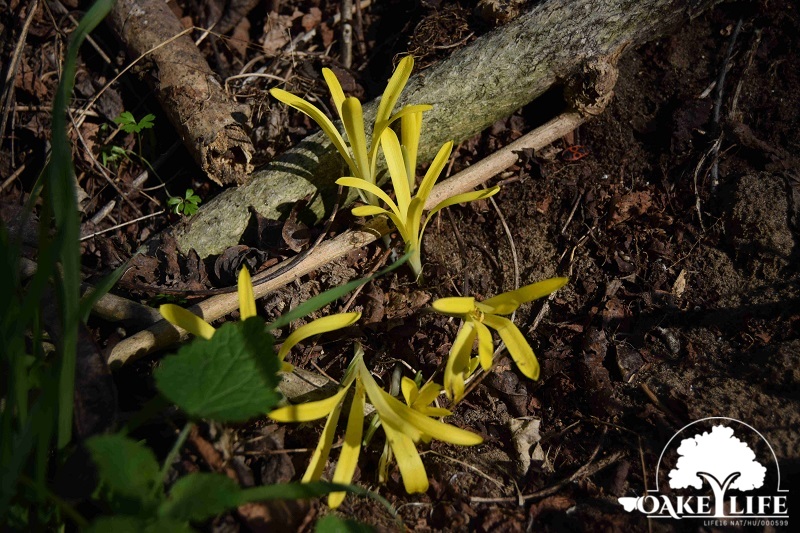Compared to 38 flowering individuals in 2018, in the autumn of 2019 more than twice as many Sternbergia colchiciflora were blooming in a small, planted oak forest in the Peszér-forest.
Moreover, more than the 77 individuals found may lurk beneath the earth’s surface, as this flower is characterized by its ability to flower and fertilize underground (usually ants do the pollination).
This small, fragile plant is usually found on steppes and bush forests, but in the present case it has occurred in an artificially restored forest of a pedunculate oak main species. The plant bloomed in the largest number on a row of earlier extracted stumps, which suggests that the former population was able to survive there and began to expand slowly from there – also with the help of ants.
No Sternbergia colchiciflora were found on this row of extracted stumps last year, however, this year – following the selective killing of idol and western whip trees that colonized these stumps – more light came to the soil, which we hypothesized induced surface flowering.
The long-term survival of the Sternbergia colchiciflora in the Peszér-forest can only be ensured by the parts that are not closed (clearings, unclosed shrubs, opening forests).
One of the main goals of the OAKEYLIFE project is to restore natural physiognomy (e.g. by creating micro-clearings) in production areas where native species would not naturally develop a closed forest. We hope that this will also create favorable conditions for many species, including the Sternbergia colchiciflora, helping to restore their favorable conservation status.
(We thank László Haraszti (SZIE MKK, BSc in Nature Conservation Engineering) for the interesting information and the photo provided to us.)

